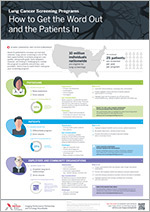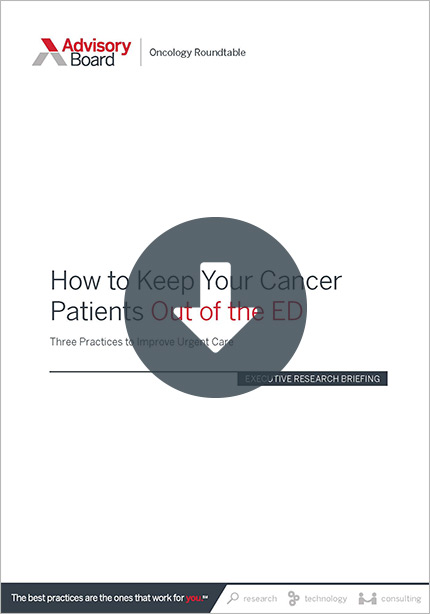Auto logout in seconds.
Continue LogoutU.S. cancer death rates declined among men and women from 1999 to 2015, though overall incidence rates of cancer varied among children, men, and women, according to a report published last week in Cancer.
June 21 webcon: Get the latest innovations in surgical and interventional oncology
Report details
For the report, the American Cancer Society, CDC, the North American Association of Central Cancer Registries (NAACCR), and the National Cancer Institute (NCI) collaborated to examine U.S. cancer trends. The researchers examined cancer incidence data from NAACCR for 42 states and cancer death data from the National Center for Health Statistics National Vital Statistics System.
The researchers released their report, called the Annual Report to the Nation on the Status of Cancer, in two parts. The first part focuses on national cancer statistics, and the second part focuses on recent changes in prostate cancer trends.
Findings
Overall mortality rates
The researchers found there were 163.5 cancer-related deaths per 100,000 U.S. adults each year from 2010 to 2015. The researchers said overall cancer death rates from 1999 to 2015 declined by 1.8% per year among men and by 1.4% per year among women.
In particular, the researchers found death rates from 2011 to 2015 decreased for 11 of the 18 most common cancer types in men and for 14 of the most common cancer types in women. However, the researchers found death rates from 2011 to 2015 increased for liver, pancreas, brain, and other nervous system cancers among both men and women. The researchers also found death rates increased for uterus cancer among women and for soft tissue and oral cavity and pharynx cancers among men. In addition, the researchers found that overall prostate cancer mortality declined from 1993 to 2013, but stabilized from 2013 to 2015.
Among children, the overall cancer death rate decreased by 1.5% per year from 2011 to 2015, according to the researchers.
Disparities in cancer mortality rates
The researchers found men had a higher cancer-related morality rate than women. Specifically, the researchers found that, on average, 196.7 out of every 100,000 men died of cancer each year from 2010 to 2015, while an average of 139.5 out of every 100,000 women died from cancer each year from 2010 and 2015.
The researchers also found that black men and black women had higher rates of cancer-related deaths than their counterparts. "Except for female lung cancer, black men and black women had the highest death rates for cancer sites with the highest mortality in the overall population: lung, prostate, female breast, colorectal, and pancreas," the report stated. The researchers found non-Hispanic adults had higher cancer-related mortality rates than Hispanic adults.
Cancer incidence rates
The researchers found that overall cancer incidence rates from 2008 to 2014 decreased by 2.2% per year among men and remained stable among women. Among children, overall cancer incidence rates rose by 0.8% per year from 2010 to 2014.
The researchers found that, on average, 453.8 new cases of cancer were diagnosed per 100,000 people each year from 2010 to 2014. According to the researchers, the incidence of cancer is higher among men than women—with physicians diagnosing an average of 502 new cases of cancer per 100,000 men annually from 2010 and 2014, compared with an average of 420.6 cases per 100,000 women each year from 2010 to 2014.
The researchers found black men had the highest incidence of cancer, with 558.2 cancers per 100,000 people diagnosed each year from 2010 to 2014. In comparison, the researchers found an average of:
- 500.1 cancer cases per 100,000 white men diagnosed each year from 2010 to 2014;
- 446.8 cancer cases per 100,000 American Indians and Alaska Native men diagnosed each year from 2010 to 2014; and
- 309 cancer cases per 100,000 Asians and Pacific Islander men diagnosed each year from 2010 to 2014.
Among women, the researchers found that an average of:
- 428.7 cancer cases per 100,000 whites were diagnosed each year from 2010 to 2014;
- 409.9 cancer cases per 100,000 American Indians and Alaska Natives were diagnosed each year from 2010 to 2014;
- 406.8 cancer cases per 100,000 blacks were diagnosed each year from 2010 to 2014;
- 295.8 cancer cases per 100,000 Asians and Pacific Islanders were diagnosed each year from 2010 to 2014.
The researchers found Hispanic men and women had a lower rates of cancer incidence than non-Hispanics.
The researchers also found that overall prostate cancer incidence rates decreased by an average of 6.5% each year from 2007 to 2014, declining from a rate of 163 new cases per 100,000 men to 104 new cases per 100,000 men. However, the incidence rate of advanced prostate cancer increased from 2010 to 2014, according to the researchers.
The researchers said the increase in the incidence rate of advanced prostate cancer and the stabilization of prostate cancer mortality rates coincides with a decline in prostate-specific antigen (PSA) screening, but it is unclear whether there is a connection. NCI's Serban Negoita said the researchers "can't say what triggered the change" in the rates of advanced prostate cancer incidence and prostate cancer mortality, noting that many factors could contribute to such a change and the researchers did not attempt to determine a particular cause.
Findings trigger debate on prostate cancer screening
Kathy Cronin, the deputy associate director of the surveillance research program at NCI, said, "There is a lot of good news in the report—overall mortality is going down for all cancers combined."
According to the Washington Post, the researchers' findings on prostate cancer trends rekindled a debate over PSA screenings, which started in 2012, when the U.S. Preventive Services Task Force (USPSTF) recommended against routine PSA tests because of evidence suggesting the potential harms associated with the test outweighed the potential benefits. Urologists and prostate cancer patients pushed back on the recommendation, touting the benefits of PSA screening. USPSTF earlier this month relaxed its recommendation, advising men ages 55 to 69 to decide in consultation with their physicians whether to receive PSA testing for prostate cancer.
However, those who were critical of USPSTF's recommendation in 2012 have said the researchers' findings indicate that the incidence rate of advanced prostate cancer might have increased as a result of USPSTF's previous stance on PSA screenings, because it caused several physicians to miss an opportunity to treat the disease at an early stage.
Eleni Efstathiou, an oncologist at MD Anderson Cancer Center and an opponent of USPSTF's 2012 recommendation, said the latest data is "no surprise." She said, "I believe the fact that we loosened up on screening led to more advanced disease upon diagnosis. What the task force did in 2012, they decided that knowledge is bad, rather than saying knowledge should be met by more knowledge and education."
However, Otis Brawley, chief medical and scientific officer of the American Cancer Society, said, "It's difficult to look at a population and say that one thing that you did is the cause of something. A nonscreening recommendation in 2012 would not have affected the mortality rate so quickly."
Alexander Krist, a family medicine physician who is vice chair of USPSTF, agreed, saying it would be difficult to identify a link the task force's 2012 recommendation and the recent trends in prostate cancer, because several factors, such as new treatments, could have an effect. He added that PSA screenings could have declined before USPSTF issued the 2012 recommendation (Kaplan, Los Angeles Times, 5/22; Tamkins, Buzzfeed, 5/22; Ingram, MedPage Today, 5/23; McGinley, Washington Post, 5/22).
June 21 webcon: Get the latest innovations in surgical and interventional oncology
Learn how best-in-class organizations are integrating surgical oncology and interventional oncology into their cancer programs, as well as technology overviews and strategies to maximize the value of these services.
Don't miss out on the latest Advisory Board insights
Create your free account to access 1 resource, including the latest research and webinars.
Want access without creating an account?
You have 1 free members-only resource remaining this month.
1 free members-only resources remaining
1 free members-only resources remaining
You've reached your limit of free insights
Become a member to access all of Advisory Board's resources, events, and experts
Never miss out on the latest innovative health care content tailored to you.
Benefits include:
You've reached your limit of free insights
Become a member to access all of Advisory Board's resources, events, and experts
Never miss out on the latest innovative health care content tailored to you.
Benefits include:
This content is available through your Curated Research partnership with Advisory Board. Click on ‘view this resource’ to read the full piece
Email ask@advisory.com to learn more
Click on ‘Become a Member’ to learn about the benefits of a Full-Access partnership with Advisory Board
Never miss out on the latest innovative health care content tailored to you.
Benefits Include:
This is for members only. Learn more.
Click on ‘Become a Member’ to learn about the benefits of a Full-Access partnership with Advisory Board
Never miss out on the latest innovative health care content tailored to you.


